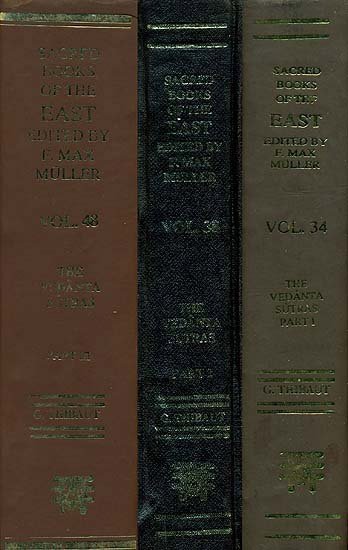Brahma Sutras (Ramanuja)
by George Thibaut | 1904 | 275,953 words | ISBN-10: 8120801350 | ISBN-13: 9788120801356
The English translation of the Brahma Sutras (also, Vedanta Sutras) with commentary by Ramanuja (known as the Sri Bhasya). The Brahmasutra expounds the essential philosophy of the Upanishads which, primarily revolving around the knowledge of Brahman and Atman, represents the foundation of Vedanta. Ramanjua’s interpretation of these sutras from a V...
Sutra 3.3.12
12. Such qualities as having joy for its head, and so on, are not established, for if there were difference (of members) there would be increase and decrease.
The declaration that the essential qualities of Brahman are established for all meditations, does not imply that such attributes as 'having joy for its head' are equally established. For the latter are not qualities of Brahman, since they are mere elements in a figurative representation of Brahman under the form of an animal body. Otherwise, i.e. if Brahman really possessed different members, such as head, wings, and so on, it would be liable to increase and decrease, and this would be in conflict with texts such as 'the True, knowledge, infinite is Brahman.'—But if this reasoning holds good, then all the infinite qualities belonging to Brahman such as lordly power, generosity, compassion, and so on—all of which are incapable of existing apart from the subject to which they belong-would have to be comprehended in all those meditations on Brahman where they are not expressly mentioned; and this could not possibly be done, as those qualities are infinite in number.—This difficulty the next Sūtra removes.
